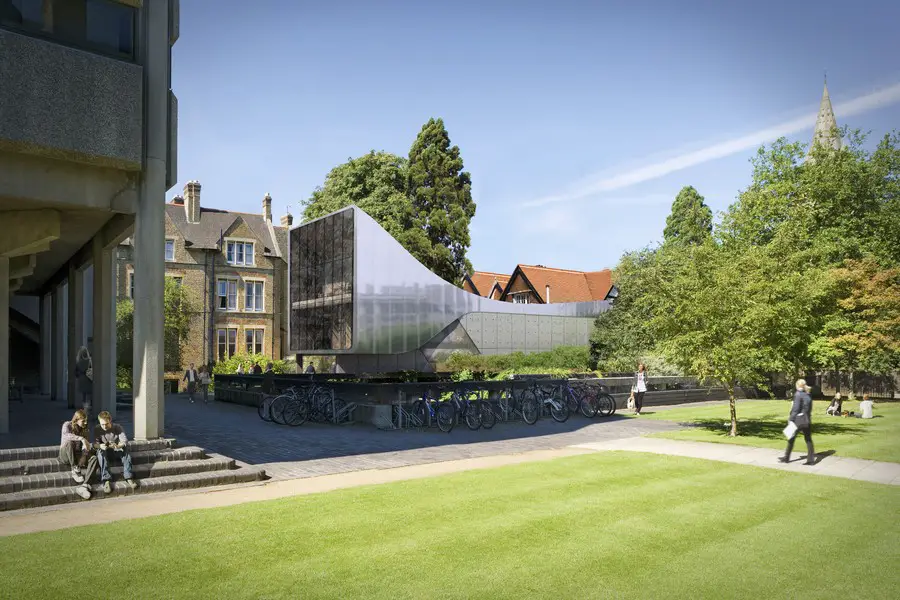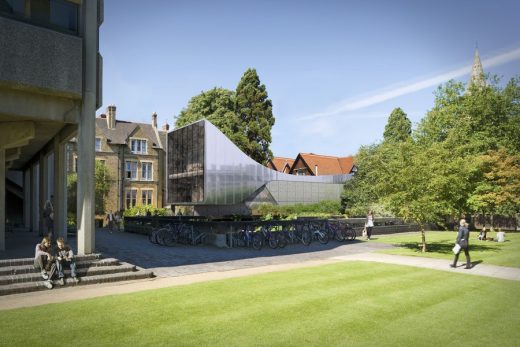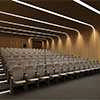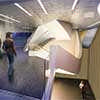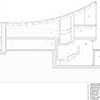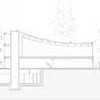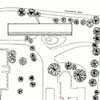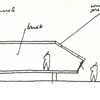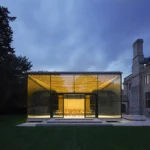Saint Antony’s College, Oxford Architecture, Design, England, News
Saint Antony’s College Oxford : Middle East Centre
Higher Education Building in England, UK – design by Zaha Hadid Architects
24 Jan 2013
Middle East Centre, Saint Antony’s College
Design: Zaha Hadid Architects
The Middle East Centre of St. Antony’s College is the University of Oxford’s centre for interdisciplinary study of the Modern Middle East. The centre was founded in 1957 and it is focused on research on humanities and social sciences with a wide reference to the Arab World and its geographic adjacencies.
The Centre’s research core is a specialised library and substantial paper and photographic archive covering material from 1800’s onwards. At present, the Middle East Centre’s Library and Administration facilities are housed in the former Rectory of the Church of SS. Philip and James at 68 Woodstock Road.
The archive is housed in the basement of the neighbouring property at 66 Woodstock Road, sharing the building with other facilities and rooms of the college. The Middle East Centre also had 3 workrooms in the same property. To tie in with the St. Antony’s College future plans the Middle East Centre is planning a new Library and Archive to meet the current use for research and academic activities.
Construction for the Zaha Hadid Architects designed scheme, situated in the garden plot between 68 and 66-64 Woodstock Road, is due to commence in January 2013. The new building will comply with the College’s vision for growth and add formal coherence to the existing quad, and tie in with the ambitious ADP’s masterplan for St. Antony’s college.
Our approach is to define a series of plateaus and territories where different academic and research affiliations can be apparent from the character of the interior space. Form is driven by a series of tension points spread on a synthetic landscape that blends built and natural elements. The new structure deforms and adapts to this new abstract environment, revealing paths and flows, whilst containing the more introvert aspects of the programme brief. The new bridging form allows for programme connection at different levels, gradating space in relation to the public/ private dichotomy. The intention is to create a suspended structure that allows for the more public aspects of the brief to infiltrate the building and spill into the college’s curtiledge facing the Hilda Bess building. This is a flexible territory where space is layered through contrasting use of built elements and materials.
The main bridging shell is linked to this open area by a central staircase that lead the user to the centre’s main academic components, the new library and the new archive. The contrast in scale and depth is highlighted by a concave/convex nature of the main reading spaces, where the limited variation of use is complemented by material difference in relation to the public plateau. By lifting the connection between 68 and 66 Woodstock Road, it allows for a more diverse and complex articulation between the interior and exterior and well as the programme brief elements themselves, opening up new public spaces and reconnecting the Middle East Centre with the south boundary of the College through a new organized quad link. By defining the main bridge in terms its flow and dynamism, we allow for the existing structure to be read as separate elements, complementing their current detached character.
The building does not aim to impose; but instead the floating nature of the ‘bridge’ is emphasised via the chosen cladding material. The main building body will be clad with stainless steel, which has a light and ephemeral appearance, because the existing context of listed buildings and trees are mirrored in its surface; as are the ever changing light conditions and seasonal changes.
The impression of a floating link is further supported through the use of frameless glazing to the base of the stainless steel clad main body. Located here on the ground floor of the Softbridge building is the foyer, which doubles up as a multipurpose space for exhibitions or small events. The expanse of frameless glass towards the landscaped area in front of Woodstock Road encourages to linger, rest and reflect.
Viewed from the South where also the entrance is located the building opens itself up towards the internal courtyard, where a new landscaped level connection is being created as the access route between the new Gateway building and the Softbridge building.
Saint Antony’s College Zaha Hadid – Building Information
Architect: Zaha Hadid Architects
Design: Zaha Hadid Architects
Associate Director: Jim Heverin
Project Architect: Johannes Hoffmann, Ken Bostock
Project Team: Goswin Rothenthal, Theodora Ntatsopoulou, Saleem A. Jalil, Mireia Sala Font, Amita Kulkarni, Goswin Rothenthal, Sara Klomps, Alex Bilton, Yeena Yoon, Barbara Bochnak
Consultants Structural Engineers: Adams Kara Taylor
Mechanical/ Electrical/Accoustics: Max Fordham
Lighting Design: Arup Lighting
Façade Consultants: Arup Façade Engineering
Cost Consultants: Sense Cost Ltd
Fire Engineers: Arup Fire
Planning Supervision: Jppc Oxford
Forestry And Arboriculture Consultant: Sarah Venner
Access: David Bonnet
Landscape: Gross Max
CDM: Andrew Goddard Associates
Visualisation: Cityscape
Program: New Academic Building
Size/Area: Total Floor Area 1,200m2
Site Area: 900 m2
Footprint Area: 900 m2
Saint Antony’s College Oxford – Middle East Centre images / information / from Zaha Hadid Architects
Previously on e-architect:
Middle East Centre, St. Antony’s College
Zaha Hadid Architects
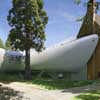
image from architect
University of Oxford Building
9 Jan 2013
Saint Antony’s College
Oscar Niemeyer in the UK
Location: Oxford, England
Date: [1973]
Oscar Niemeyer / Dominic Michaelis Associates
When David Turrent, later a partner in ECD Architects, came to work in my office, Dominic Michaelis Associates, in 1973, I had been nominated by Oscar Niemeyer as his executive architect for the planning, detailing and construction of a college residential building for Saint Antony’s College, Oxford, the project organised by one of its fellows, David Gallagher, and so I was able to ask David Turrent to work on this exciting project.
All was going well, but unfortunately, the 1974 oil crisis cut the project funding from its source, the Volkswagen Foundation.
All working drawings were ready, and costings by NNN were complete, so the project cancellation came as a major blow to all involved.
It would have been wonderful to have had a Niemeyer building in the UK.
These are drawings and models by Niemeyer given to us to start from.
An article was written in Architecture d’Aujourd’hui but I do not think that any such coverage was given by the UK architectural press.
Since Niemeyer’s recent death, would it be opportune to have a page reminding us that we so nearly had a Niemeyer building in the UK.
Saint Antony’s College Oxford information / images from Dominic Michaelis
Location: 62 Woodstock Road, Oxford, England, UK
Oxford Architecture Designs – chronological list
Oxford Architecture Walking Tours
Major Oxford building:
Ashmolean Museum Extension
Ashmolean Extension
A recent Oxford College building design on e-architect:
Stanton Williams
Lincoln College Arts Centre
A recent Oxford College building on e-architect:
MJP Architects
St. John’s College Oxford – The Kendrew Quadrangle
Rick Mather Architects
Keble College Building
Comments / photos for the Saint Antony’s College Oxford – Middle East Centre page welcome

